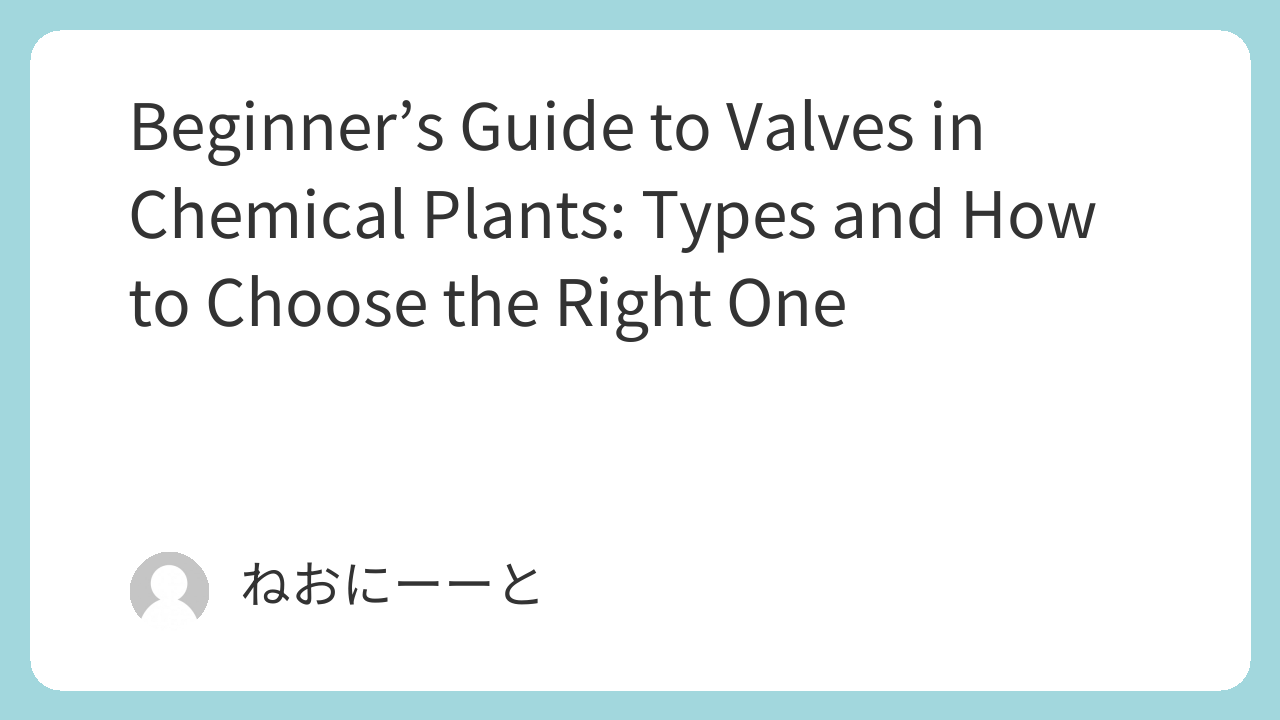Valves are everywhere in chemical plants, but choosing the right one can be tricky.
If you’re new to plant operations or design, you might wonder:
- What types of valves are there?
- How do I choose the right one for a certain fluid or system?
In this article, we’ll explain the basic types of valves used in chemical plants and give you some simple tips for choosing them—even if you’re not a valve expert yet.
🔹 1. Why valves are important in chemical plants
Valves control the flow of liquids, gases, and even slurries.
They are essential for starting, stopping, or adjusting the process safely.
Using the wrong valve can cause leaks, equipment failure, or even accidents.
🔹 2. Common types of valves and their features
| Valve Type | Main Feature | Best For |
|---|---|---|
| Gate Valve | Simple open/close | On-off control (not for fine adjustment) |
| Globe Valve | Good flow control | Precise adjustment |
| Ball Valve | Quick operation | Clean fluids, easy maintenance |
| Butterfly Valve | Lightweight, low cost | Large pipes, low pressure |
| Diaphragm Valve | No leakage from the stem | Corrosive or dirty fluids |
| Check Valve | Prevents backflow | One-way flow systems |
Each type has strengths and weaknesses depending on the fluid, pressure, and temperature.
🔹 3. How to choose the right valve
To select a valve, consider these factors:
- What fluid will flow? (Water, acid, gas, slurry?)
- How much pressure and temperature?
- Is flow control needed, or just on/off?
- Any risk of clogging or corrosion?
Also, think about cost, maintenance, and how often it will be operated.
Tip:
For clean water, ball valves are simple and reliable.
For dirty or corrosive fluids, diaphragm or globe valves may work better.
✅ Conclusion
Choosing a valve is not just about size or price.
It’s about matching the valve’s function to the system’s needs.
As a beginner, start by learning the basics of valve types and think about what your fluid system requires.
Over time, your experience will guide you to make better choices.

Comments